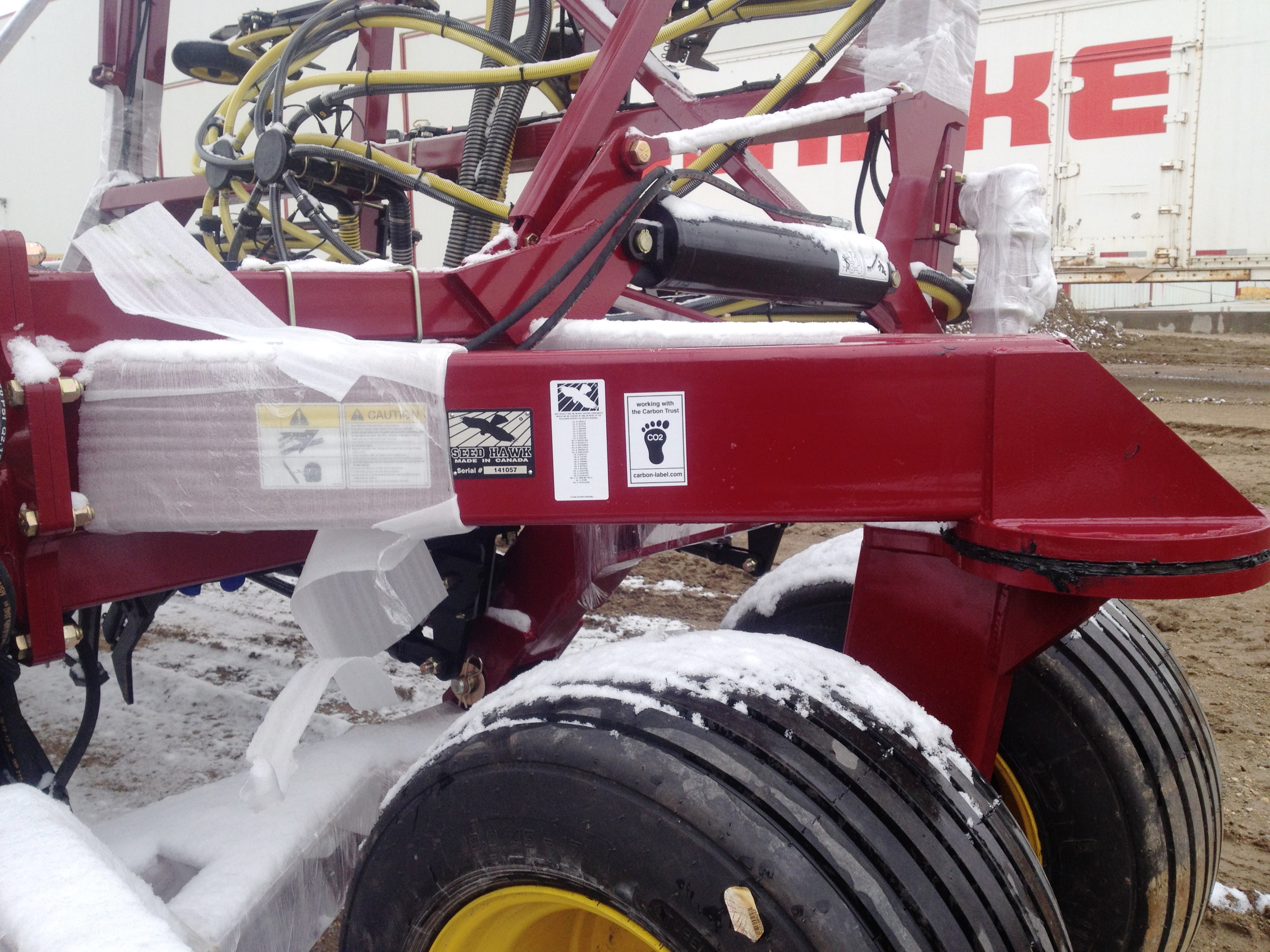This is a contributed post by former SRC employee, Susan MacWilliam.
Having sound environmental practices is becoming important for many companies worldwide because clients, consumers and regulatory agencies are expecting it. Many companies are going even further, taking steps toward determining, communicating and reducing their environmental impact through carbon footprinting.
What is a Carbon Footprint?
One way of demonstrating environmental commitment is to determine the carbon footprint of a product, organization or service. A carbon footprint estimates the amount of greenhouse gas emissions released and removed during business operations and activities. Greenhouse gases are usually described in terms of equivalent carbon dioxide emissions (written as CO2e), or a carbon footprint.
Using an Eco-label
When it comes to products, a carbon footprint usually includes emissions from making, distributing, using and disposing of the product. One of the most effective ways to communicate product carbon footprints to consumers is by using an eco-label. Many different types of eco-labels exist, but one of the more common types is a decal or logo showing environmental performance. These logos are applied directly to products for easy reference by consumers.
Product Carbon Footprint Example: Seed Hawk Inc.
Seed Hawk Inc., a Saskatchewan-based company, manufactures agriculture equipment that delivers precise and accurate seed and fertilizer placement in one field operation. One of Seed Hawk’s values is environmental commitment. In 2012, Seed Hawk contacted SRC’s EcoAccounting team about obtaining eco-labels for some of their products. We were excited to work with Seed Hawk to support their Environmental Commitment value.

1. Choosing an eco-label
Our first step was working with Seed Hawk to determine which eco-label was the best choice for them. Because they wanted to look at the carbon footprint of some of their products, the Carbon Reduction Label was the right choice. This label is provided by a reputable, well-known company headquartered in the UK called the Carbon Trust. This eco-label provides credible, third-party verified certification, demonstrating to consumers that Seed Hawk’s environmental commitment is genuine. We acted as a liaison between Seed Hawk and the Carbon Trust in the UK. To the best of our knowledge, an eco-label hadn’t been applied to agriculture equipment before.
2. Collecting info for the carbon footprints
After the eco-label was selected, we worked with Seed Hawk to identify and collect the information required to calculate their products’ carbon footprints. This is a daunting task because calculating a carbon footprint requires a lot of information, such as:
- the materials and energy used to make the raw materials that go into the products
- how products are manufactured
- all transportation activities related to the process
- using the products
- disposal and recycling of the products
3. Calculating the carbon footprints
Once all of the necessary information was collected, we calculated the carbon footprints of the products. These calculations involved determining the amount of greenhouse gases emitted to and removed from the atmosphere as a result of making, distributing, using and disposing of the equipment. Globally-accepted standards for calculating product carbon footprints were followed; however, as this eco-label had not yet been applied to agriculture equipment, we had to developed methods for adapting the standards to agriculture products.
4. Using the eco-label
With the carbon footprints complete, we submitted the work to the Carbon Trust in the UK for an independent, third-party review. The Carbon Trust in the UK agreed that the products met their requirements for certification and the eco-label was issued.
 Seed Hawk is now able to use the label on their marketing materials to demonstrate their environmental commitment, and they have already produced equipment using the logo.
Seed Hawk is now able to use the label on their marketing materials to demonstrate their environmental commitment, and they have already produced equipment using the logo.
Seed Hawk is able to use the label for the next two years, after which they will need to re-certify their products. We will assist Seed Hawk with the recertification process by updating the carbon footprints with more recent information to ensure they’re representative of current production practices.
In the meantime, we’re working with Seed Hawk to collect data directly from growers to get a better understanding of the emissions resulting from product use. Agriculture equipment is used for many years after it’s made, which means that most of the emissions come from using the product. This is called a “hot spot” and indicates where future efforts can be focused to reduce environmental impacts.
For more information regarding the Carbon Trust Certification, read the press release.
